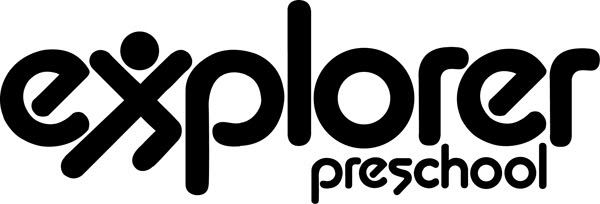By Teacher Konne Ainsworth, Explorer Director
We educators sometimes fail to make sure that what is understood by us is understood by parents, too. I thoroughly believe that a major part of educating children is creating a bond between parents and teachers to together provide what's right for children.
In the past, educators were driven by materials and information that needed to be “taught” to children. Curriculum was designed primarily by publishing companies, which interpreted what districts wanted to have taught to children in each grade. Teachers were often given materials for each subject area with little training in presenting the material. Lectures were common, and rote learning was thought to be effective, that is, children would be trained to just parrot back what an adult said. Hands on materials were limited.
Through research, particularly that of Jean Piaget, and the reality that our education system was often ineffective, some changes have been made. Many of the changes came from early childhood educators. We have come to call some of these changes developmentally appropriate practice (DAP), to reflect the research based on the needs of the child. Learning proceeds in a predicable and logical way based on a child’s growth and development, but how it is nurtured is essential. Children are being asked to do more divergent thinking and be more involved in their own learning. We also believe that each child's learning style, maturity level, and interests are unique and need to be respected. Some teaching practices have changed. Unfortunately, many elementary teachers are not required to take child development courses in conjunction with teaching practices.
Cooperative learning means that children are grouped together to help one another rather than tracked into homogeneous groups. This is very effective in elementary school. For instance, four children may work together in spelling: one having mature skills, one needing help, and a couple in the middle having medium skills. They would discuss words to be learned, form strategies, and work together. Thus, the focus would shift from that of competition to that of cooperation. These days, however, the stress of being at the ‘top of the class’ and being competitive is increasingly becoming more important, but it is really not the best ‘learning’ environment for most children. It’s something to think about: when the focus is on competition, not cooperation, you might get into the best college…but cannot work well with anyone!
Another major change in teaching reading and writing comes from knowing that young children have varying degrees of readiness to read. The whole language approach encourages children to dictate stories before they formally begin reading. Children can then 'read' their own words, and as they get older, they can illustrate and edit them. Children may also decide their own spelling words, make their own books, and read various levels of literature, rather than reading basal texts, which assume that all children learn at the same rate. Basal texts do have more of a scheduled phonetic approach though, so they are used, too. Most good teachers use multiple approaches when teaching children in the areas of literacy and other disciplines since we know that children have many modalities and styles of learning. However, the testing focus has had a fairly negative effect on many teachers who feel they NEED to teach to the test. Parents are still confused about the role of testing and how if benefits children. I encourage you to ASK about the value of the testing when your child enters elementary school. Be an advocate for children.

No comments:
Post a Comment